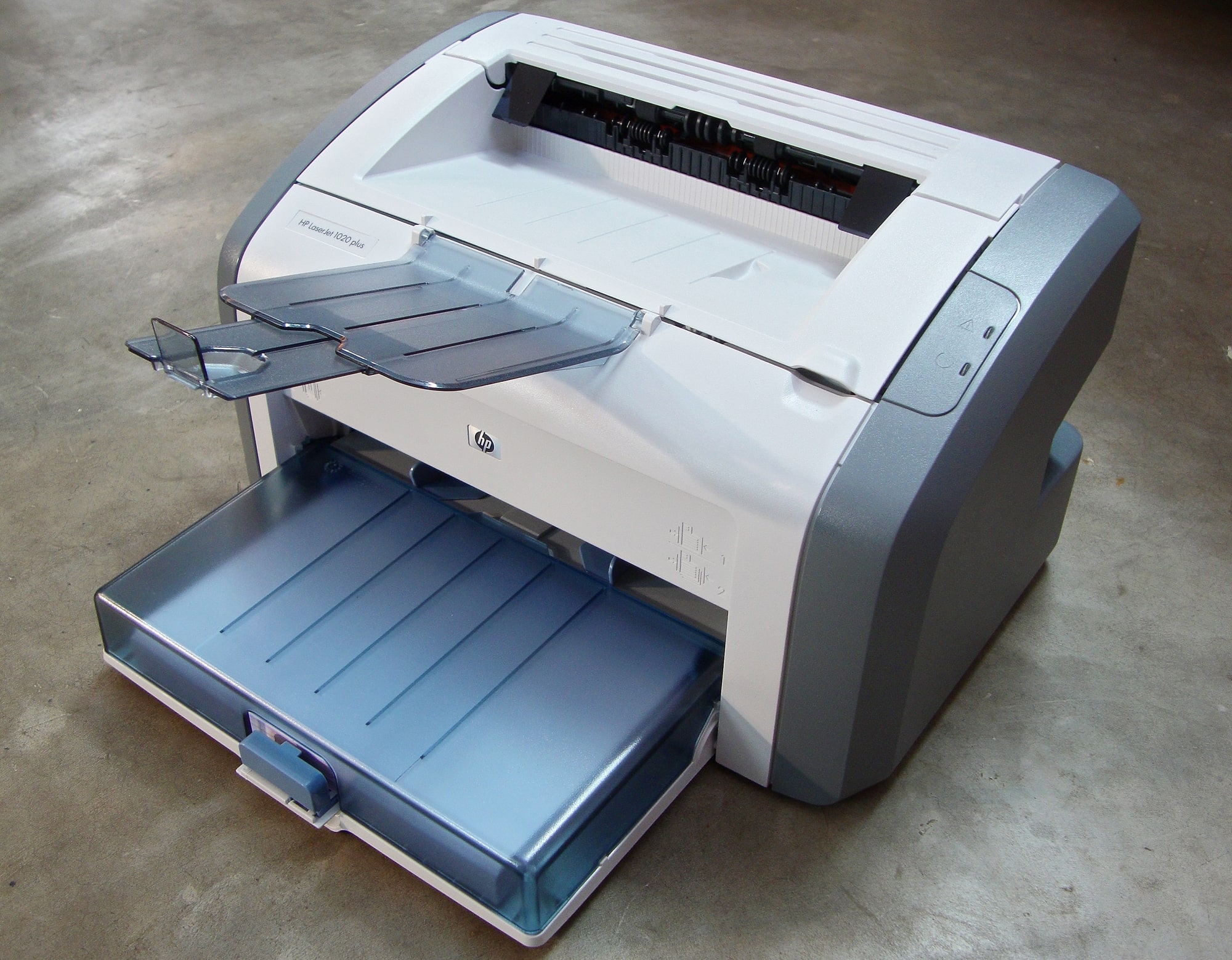
A laser printer is a type of electrical device that reproduces printed documents from digital images. A laser printer and a photocopier share the same operating system (Using the process of electrography). Images are produced on a piece of paper by a light beam. Although toner powder, which is inexpensive and lasts a long time, is more expensive than pricey ink cartridges, laser printers often cost less to operate than inkjet printers. For printing lengthy text documents, offices generally utilize a laser printer as their “workhorse” or printer. This mechanical efficiency is typically complimented by cutting-edge processing efficiency. Everyone in a small office can be served with a standard laser printer controller.
Laser printers were too expensive to use as personal printers when they were initially launched. But prices for laser printers have dropped significantly since then. A basic model is now available for a little bit more than a decent inkjet printer. Prices for laser printers should keep declining while performance increases as technology developed. We’ll also see a number of fresh design iterations and perhaps even brand-new electrostatic printing uses. Many inventors think we’ve only begun to explore the possibilities of basic static electricity! Below are some of the advantages of Laser Printers in our day-to-day life:
- Performance:
Large-volume printing is the purpose of laser printers. Multiple pages can be printed without becoming stuck or having other issues. More performances are predicted in the future, along with a price drop.
- Speed:
The laser beams that a laser printer employs is known to move incredibly quickly, which accelerates the printing process. Laser printers are a lot quicker than inkjet or dot matrix printers. Laser printers are the ideal choice, especially if you need to print large amounts of paper. Laser printers, even the most sluggish models, can print about 20 sheets of paper every minute. In essence, high speed can result in increased productivity and efficiency.
- Reliability:
Despite being mechanical, laser printers are more dependable and long-lasting. Toner cartridges don’t dry out or evaporate as ink cartridges do. They are set to Build to Last by default. The toners typically have a 1500–60,000-page yield. A laser printer can endure for many years if used properly.
- Quality:
Nothing compares to a laser printer in terms of clarity and quality. Particularly texts can be viewed as being more exact and sharp. This is mostly because laser printing uses toners to fuse directly into the paper. As a result, there are no smudges or streaks on it at all.
- Noise Emission:
The majority of the time when it is operating, a laser printer makes no noise. It is designed to make noises only seldom. The noises are hardly audible, though, unless the environment is exceptionally quiet. These noises might be upsetting and distracting while working.
- Cost:
Even though a laser printer has a higher starting cost, it can produce more pages for less money. There are no ink cartridges used in this, unlike inkjet printers. Toners are used in laser printers, and they can produce more pages than an equivalent-priced ink cartridge.
- Accurate Output:
Data may be printed with greater efficiency and higher quality using laser printers. Texts printed using laser printers typically come out sharper and more exact. Because it uses laser technology, this printer doesn’t experience any smudge or smear issues. Toners in laser technology are completely focused on the paper.
- Large Print Jobs:
Although they take a little while to warm up and get the fuser hot, laser printers print 50% faster than inkjets once they are ready. There is no need to keep refilling the paper tray in the middle of a big-volume print job because color laser printers are faster and also have larger paper trays. Laser printers are also less prone to jam and interfere with the printing process because they are designed for larger print jobs.
- Low Maintenance:
To ensure accurate print quality when an inkjet printer needs a new cartridge, the heads must be adjusted. The print heads require regular cleaning and alignment during the cartridge’s lifespan. When you combine these two factors with the potential for ink to dry up in the printer’s moving parts, you have a printer that may need extensive maintenance. This is not necessary for laser printers. There is no additional labor involved in printing when toner cartridges are changed. Toner is a dry powder; thus it does not have the same cleaning issues as ink.
- Ink Does Not Smear:
Smudged ink makes printed materials look unprofessional. Color laser printers employ laser toner, which adheres to the paper via static electricity and is then heated to fuse it to the paper. Unlike documents produced by inkjet printers, there isn’t any wet ink that might smear if the paper gets wet from sweating fingers or water drops. Because of this, the text and graphics printed on the paper will always be legible and distinct.
What kinds of laser printers are there?
Only black and white laser printers were accessible in the past, but as digitization advanced, color printers started to be used. Both colored and black and white laser printers are now readily available. Toners must be purchased and vary in type. The most recent models of printers not only print but also scan, email, and fax.
When and where are laser printers used?
Since they are best suited for office use, laser printers are preferred in the majority of organizations. Printing is used increasingly frequently by businesses. Despite being exceptionally quick and silent, laser printers have certain flaws. The benefits and drawbacks of each technology advancement are unique, and laser printers are no exception. Users can choose if laser printers will work best for them by weighing the advantages and downsides.